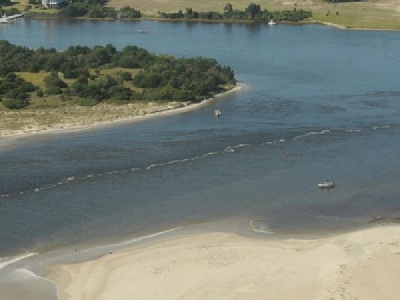
Posted on June 12, 2018
By Lee Hinnant, stateportpilot.com
Between constantly monitoring for sea turtles and relocating nests outside work areas and previously placed darker sands, Oak Island’s Sea Turtle Protection Program members have their hands full this season.
Eleven of the more than 100 members are being paid by Weeks Marine Inc. to keep a vigil for sea turtles when sand disposal from dredging moves to Oak Island, expected in mid-July. It’s a serious responsibility that goes well beyond the usual monitoring for nests and false crawls.
In addition to relocating nests away from the areas receiving sand, the turtle monitors also will move any nests laid in the darker and finer sands put on the beach last winter as part of an emergency dune project following Hurricane Matthew.
Most of the sand identified by regulators as problematic is between SE 58th Street and 22nd Place East, the vicinity of Ocean Crest Pier, said Jacci Hohnstein, now in her fourth year as program coordinator. Generally, sand west of the pier is acceptable, she said.
She estimates between the new sand and problem areas there are less than four miles of suitable ocean beach for nests, as compared to the town’s approximate total of 9.5 miles of beach. “It’s going to be busy,” she predicted. Moving multiple nests in a night and then continuing the monitoring will likely make for some long days and nights.
Still, the season has started on a high note.
“We are proud to have the first documented nest (on May 5) and we did not have to move it,” Hohnstein said.
The 2016 season was big, with 115 nests, followed by 90 last year. Female sea turtles tend to have a strong season or two, then rest and make fewer nests for a year or so, making it possible that 2018 will be something of an off-year.
Of 11 nests so far this season, the turtle patrols have had to relocate six.
Concerns about some of the darker sand by environmental regulators prompted a large-scale temperature study on Oak Island. Technicians have placed temperature-sensing recorders at 14 locations. One is at Caswell Beach, outside the area that received emergency sand. Two others are at Oak Island outside the areas that got emergency sand. Those “outside” monitors serve as controls.
The other 11 sensors are buried in various locations that received emergency sand, some in darker sand and some in whiter sands.
The monitors record the temperature every hour, said Johnny Martin, engineer for Mofatt & Nichol. Every two weeks, a technician checks on the devices and downloads the data via Bluetooth, Martin said. The technician also performs a Munsell color test on the sand at 12 locations. The Munsell test will show whether and how much the sand bleaches out over the season.
The concern about sand color was raised by a biologist with U.S. Fish and Wildlife Service. Generally, hotter incubation temperatures leads to more females being born. Installed May 15, the monitors will remain through late August or sometime in September, Martin said.
“We want to see if there are trends or differences and what those are,” Martin said.
Source: stateportpilot.com





